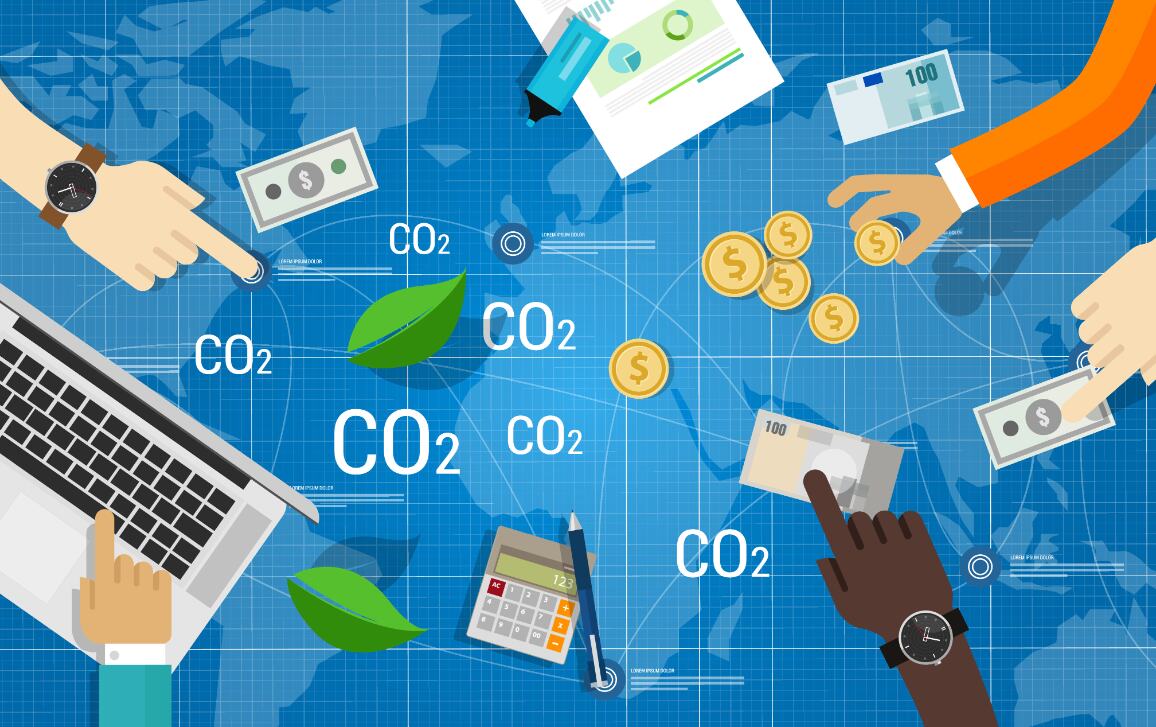
The European Union Implements Carbon Border Adjustment Mechanism (CBAM)

On October 1, the European Union (EU) initiated the first phase of a Europe-wide tax on carbon in imported goods, known as the Carbon Border Adjustment Mechanism (CBAM). This mechanism imposes a tariff on certain carbon-intensive products that are imported into the EU. From October 2023 to December 2025, importers of goods covered by the CBAM will be required to declare emissions associated with those products, but they will not have to purchase any carbon allowances. However, starting in 2026, importers will need to buy CBAM certificates, a form of border tax, to offset the embedded emissions. The introduction of this border tax aims to encourage other countries to adopt similar carbon pricing measures based on the EU emissions trading plan. The obligation for importers to pay a charge for their imports under the CBAM will come into effect on January 1, 2026. This move by the EU is seen as part of its trade policy for promoting green energy and aims to strike a balance between carbon pricing norms for imported goods and domestically produced goods within the EU.
Reporting Period and Scope of CBAM
The first reporting period for importers will conclude on January 31, 2024. The CBAM establishes a price on carbon emissions during the production of carbon-intensive goods that are at risk of carbon leakage, such as cement, iron and steel, aluminum, fertilizers, electricity, and hydrogen upon entering the EU.
Addressing Scope 3 Emissions
The CBAM also aims to address Scope 3 emissions, which encompass all indirect emissions associated with an organization’s value chain rather than emissions directly produced by the company itself. Scope 1 refers to a company’s direct greenhouse gas emissions, while Scope 2 covers indirect emissions resulting from purchased energy sources. By targeting Scope 3 emissions, the CBAM seeks to mitigate the overall carbon footprint associated with imported goods.
Comparison with EU-Emissions Trading Systems (ETS)
Since 2005, the EU has implemented a carbon pricing system for highly polluting industries within its borders, requiring manufacturers to purchase carbon credits to offset their emissions or face significant fines. The EU carbon market is known as the busiest for carbon credit trading. The EU-Emissions Trading Systems (ETS) adopts a cap-and-trade approach, setting emission limits for each company and allowing over-polluters to buy unused credits from under-emitters. While the ETS focuses on goods produced within the EU, the CBAM specifically targets imports into the EU. Exporters selling goods to the EU will be affected if their products fall within the parameters of the CBAM. According to Boston University, India’s total exports to the EU are projected to decline by 2.7% compared to the baseline without CBAM, leading to a -0.043% decline in GDP by 2030.
Carbon Credits and Clean Development Mechanism (CDM)
Carbon credits, also known as carbon offset credits or carbon allowances, enable companies to offset their carbon emissions by investing in renewable energy and other carbon reduction projects. Companies that exceed emissions standards set by regulatory bodies can purchase carbon credits from entities that generate carbon offset credits through greenhouse gas reduction initiatives. This allows them to comply with regulations without making significant operational changes. The carbon credit system was established under the Kyoto Protocol in 1997, with the United Nations’ Clean Development Mechanism (CDM) being one example of a non-government issuer of carbon credits.
Impact on Developing Countries and Market for Green Technology
A study by UNCTAD in 2021 suggests that the implementation of CBAM could lead to a decline in exports from developing countries in favor of developed countries, which typically have less carbon-intensive production processes. The study also proposes that the EU could consider implementing CBAM neighboring policies and utilizing the revenue generated by CBAM to accelerate the adoption of cleaner production technologies in developing countries. This could potentially create a significant market for green technology, similar to the impact observed after the introduction of the Clean Development Mechanism (CDM) in 1997.
However, the collapse of the Kyoto Protocol and the CDM scheme has made developing countries skeptical about emissions trading mechanisms. While the EU and Japan used CDM as an incentive for developing countries, it appears that the EU is now utilizing CBAM as a means to create a global market for green technology as part of its decarbonization plan by 2050. In this process, discussions on “climate justice” and the “historical responsibility of climate change” have taken a back seat. It is hoped that these important issues, along with binding commitments on carbon crediting guidelines, will be raised by the Global South in the upcoming 28th Conference of Parties (COP28) starting on November 30.
Views expressed are personal
SDGs, Targets, and Indicators Analysis
1. Which SDGs are addressed or connected to the issues highlighted in the article?
- SDG 13: Climate Action
- SDG 8: Decent Work and Economic Growth
- SDG 9: Industry, Innovation, and Infrastructure
The article primarily focuses on the European Union’s Carbon Border Adjustment Mechanism (CBAM), which aims to address carbon emissions and promote sustainable development. This aligns with SDG 13, which specifically targets climate action. Additionally, the implementation of CBAM can have economic implications, connecting it to SDG 8 (decent work and economic growth) and SDG 9 (industry, innovation, and infrastructure).
2. What specific targets under those SDGs can be identified based on the article’s content?
- SDG 13.2: Integrate climate change measures into national policies, strategies, and planning.
- SDG 8.4: Improve progressively, through 2030, global resource efficiency in consumption and production and endeavour to decouple economic growth from environmental degradation.
- SDG 9.4: By 2030, upgrade infrastructure and retrofit industries to make them sustainable, with increased resource-use efficiency and greater adoption of clean and environmentally sound technologies and industrial processes.
The article highlights the EU’s efforts to integrate climate change measures into its trade policy through the implementation of CBAM. This aligns with SDG target 13.2. Additionally, the CBAM aims to promote resource efficiency and the adoption of clean technologies, which are targets under SDG 8.4 and SDG 9.4, respectively.
3. Are there any indicators mentioned or implied in the article that can be used to measure progress towards the identified targets?
- Indicator for SDG 13.2: Extent of integration of climate change measures into national policies, strategies, and planning.
- Indicator for SDG 8.4: Material footprint, material efficiency, and domestic material consumption.
- Indicator for SDG 9.4: Proportion of industries upgraded to sustainable practices.
While the article does not explicitly mention these indicators, they can be used to measure progress towards the identified targets. The extent of integration of climate change measures into national policies can be measured through the assessment of policy documents and implementation plans. Material footprint, efficiency, and consumption can be quantified through data on resource use and waste generation. The proportion of industries upgraded to sustainable practices can be determined through surveys and assessments of industry practices.
4. Table: SDGs, Targets, and Indicators
| SDGs | Targets | Indicators |
|---|---|---|
| SDG 13: Climate Action | 13.2: Integrate climate change measures into national policies, strategies, and planning. | Extent of integration of climate change measures into national policies, strategies, and planning. |
| SDG 8: Decent Work and Economic Growth | 8.4: Improve progressively, through 2030, global resource efficiency in consumption and production and endeavour to decouple economic growth from environmental degradation. | Material footprint, material efficiency, and domestic material consumption. |
| 8.4: By 2030, upgrade infrastructure and retrofit industries to make them sustainable, with increased resource-use efficiency and greater adoption of clean and environmentally sound technologies and industrial processes. | Proportion of industries upgraded to sustainable practices. |
Behold! This splendid article springs forth from the wellspring of knowledge, shaped by a wondrous proprietary AI technology that delved into a vast ocean of data, illuminating the path towards the Sustainable Development Goals. Remember that all rights are reserved by SDG Investors LLC, empowering us to champion progress together.
Source: millenniumpost.in

Join us, as fellow seekers of change, on a transformative journey at https://sdgtalks.ai/welcome, where you can become a member and actively contribute to shaping a brighter future.






